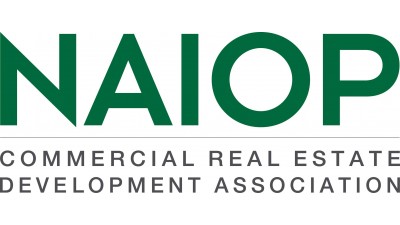Las Vegas And Value-Add Properties Offer Solutions For Crowded Industrial Market

On the West Coast, a growing population base and direct access to the U.S.’ largest ports has helped fuel an already booming industrial market. In popular markets like Los Angeles, Oakland and the Inland Empire, land availability has decreased as demand continues to outstrip supply.
U.S. West Coast ports increased their market share by weight from 39.4% in 2015 to 40.2% in 2016. Third-party logistics companies have clustered around these centers to take advantage of the heavier flow of goods. While these companies represent the largest share of leasing activity in the warehouse and distribution arena, 24% according to JLL, the market continues to attract a wide range of players.
“When you get some of these big buildings and look at it on the basis of square footage, the drivers of the biggest developments are going to be the big-box companies,” CapRock Partners president Jon Pharris said.
Finding space to accommodate those big-box companies at a reasonable price has become a challenge. In the saturated Southern California market, infill conditions and high barriers to entry are common, and large land parcels are rare. Closer to urban centers, former industrial land is being converted to mixed-use, lowering inventory and pushing up prices.
“There is less industrial product available because it's being converted into multifamily, office or mixed-use. Even if demand was the same, there would be an increase in rental rates due to the reduction in leasable space. However, given the reduction in inventory coupled with the increased demand for space, there is nearly unprecedented upward pressure on rental rates,” Pharris said.
Rent for industrial space in the Inland Empire has grown 50% since 2010 to $0.51/SF, despite inventory increasing 20%.

In the quest for more land, CapRock Partners acquisitions manager Taylor Arnett has started to explore other markets.
“SoCal is fairly saturated. It's the best market to be in, but you're going to have to pay for it, and probably overpay,” Arnett said. “CapRock just closed two deals in Las Vegas. We see a lot of opportunity there.”
Las Vegas has continued to diversify its economy following the Great Recession. The strip has supplemented its casinos with state-of-the-art convention and entertainment centers and world-class restaurants. For companies looking for large, bulk distribution centers, the city offers more space at lower rental prices and greater labor availability. In North Las Vegas, VanTrust Real Estate is developing a 120-acre industrial park. Honest Co. will occupy approximately 575K SF in building eight of the complex.
A mix of business-friendly policies, the lack of a state income tax and proximity to West Coast population centers is turning a gambling mecca into a national distribution hub.
“You're starting to see bigger buildings that are taking advantage of Las Vegas' logistics location,” Arnett said. “When you think about where Las Vegas is located, in a day's drive, you can get to 20% of the U.S. population and that is driving big-box development. Where before a 100K SF tenant was big for that market, now you are seeing 200K SF to 500K SF tenants."

Back in markets like Oakland, where tech giants have gobbled up prime properties and spurred a rush for new development, value-add industrial presents a solution for creating custom interior build-outs without breaking the bank. Under-market leases, vacant buildings and renovation projects are CapRock’s primary investment focus.
This type of creative development has been the cornerstone of an increasingly crowded West Coast market.
“A lot of times you're doing a land assemblage or trying to build a building on seven acres instead of 20 acres, and your efficiencies on what you can get on those size properties really don't help your potential income,” Arnett said. “As a result of skyrocketing land prices and smaller land parcels, we’re starting to see some multilevel warehouses go vertical.”
As more warehouses process a higher volume of goods, custom features like 36-foot clear heights will increasingly become a standard in speculative development, which continues to represent 71.3% of new construction. Despite this trend, companies are still pushing for customization.
"I think there is a lot of speculative development, but the companies that are the end users are taking the bigger spaces and tailoring their facilities for their business," Arnett said.
NAIOP's annual I.CON: Trends and Forecasts will offer an in-depth look at these trends and upcoming industrial development projects.
To learn more about this Bisnow content partner, click here.

